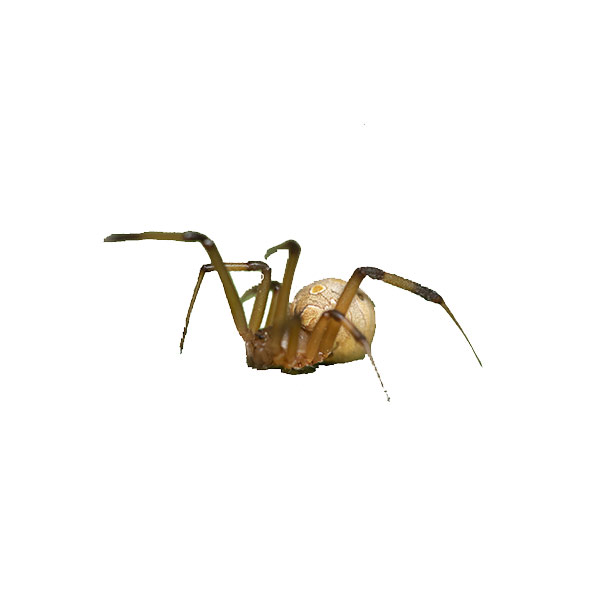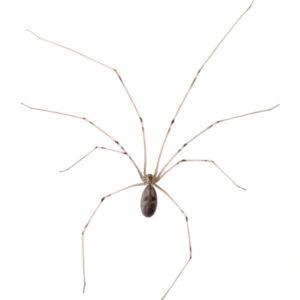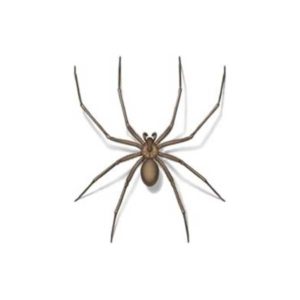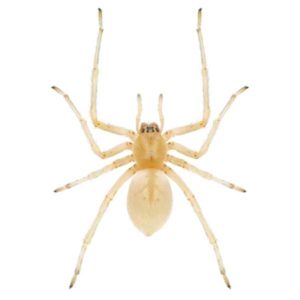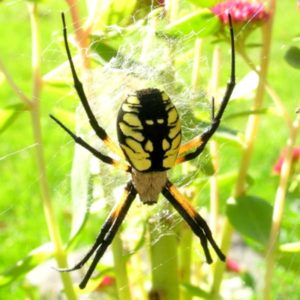Brown Widow Spider Identification
What Do Brown Widow Spiders Look Like?
Brown widow spiders, also known as cobweb spiders because of their irregular webs, are a common spider species in North Carolina. They are often mistaken for black widows due to their similar shape. They have a tan to dark brown color, with mottled patterns on their bodies. Their most distinctive feature is an orange to yellow hourglass marking on the underside of their abdomen. Brown Widows are medium-sized spiders, with females being larger than males.
Signs of a Brown Widow Spider Infestation
Signs of a brown widow spider infestation include sightings of the spiders themselves, their unique spiky egg sacs, and their irregular, tangled webs. These webs are often found in sheltered, out-of-the-way places around homes and gardens.
Habitat, Diet, Life Cycle & Bites
Where Do Brown Widow Spiders Live?
Brown widow spiders are found in various parts of the world, including the southern United States, Caribbean Islands, parts of Australia, South Africa, Japan, and Cyprus.
In these regions, they adapt to a range of environments, both indoors and outdoors. Outdoors, they favor sheltered, quiet areas like under rocks, in woodpiles, in mailboxes, garages or within debris and window frames. Inside, they often inhabit cluttered, infrequently used spaces such as garages, basements, and attics. This adaptability to diverse habitats makes them a common presence in their respective regions.
Brown widow spiders are adaptable and can live in both natural and urban environments. They are more prevalent in warmer climates and are common in the southern United States.
Diet of a Brown Widow Spider
Their diet primarily consists of small insects like flies, mosquitoes, and other small arthropods. They use their webs to capture prey, which they then immobilize with their venom.
Life Cycle of a Brown Widow Spider
The life cycle of the brown widow spider includes egg, spiderling, and adult stages. Females lay eggs in uniquely textured, spiky sacs, which protect the eggs until they hatch. The spiderlings disperse and grow to adulthood over several months.
Brown Widow Spider Bites
The bite of a brown widow spider is minor in comparison to that of a black widow and does not cause the same symptoms as a black widow bite.
Brown widow spider venom is twice as potent as black widow venom, however, it is believed the brown widow does not inject the same amount of neurotoxin. This species is timid and avoids human interaction.
In fact, males and immature brown widow spiders do not bite at all. While brown widow spider bites are typically not medically threatening, it is important for sensitive individuals to seek medical attention in the event of severe pain and swelling.
Are Brown Widow Spiders Dangerous?
While their venom is potent, brown widow spiders are generally less aggressive than black widows and their bites are less dangerous. However, individuals with allergies or sensitivities to spider venom may experience more severe reactions.
How to Get Rid of Brown Widow Spiders?
Removal of brown widow spiders involves cleaning and decluttering potential habitats, sealing cracks and crevices, and using spider traps. Professional spider extermination is recommended for widespread infestations – contact us today
Brown Widow Spider Prevention Tips
Prevent brown widow spiders by maintaining a clean and clutter-free environment, especially in outdoor areas like gardens and patios. Regular inspections and removal of unwanted debris can deter spiders from settling.
Need help with Brown Widow Spiders control?
FAQs
What Are the Symptoms of a Brown Widow Spider Bite?
Symptoms of a brown widow bite can include localized pain, redness, and swelling. Severe reactions are rare but can occur in sensitive individuals.
Are Brown Widow Spiders as Dangerous as Black Widow Spiders?
Brown widow spiders are less aggressive and their venom is considered less toxic than that of black widows. Bites are rare and typically less severe.
Are Brown Widow Spiders Aggressive?
Brown widow spiders are generally not aggressive and tend to retreat rather than bite.
What Do You Do If You Find a Brown Widow Spider?
It’s best to leave it alone or carefully remove it. Consider contacting professional spider exterminators if you’re concerned about an infestation.
Which States Have Brown Widow Spiders?
Brown widow spiders are primarily found in the southeastern United States but have been spreading to other areas.
Is a Brown Widow Spider the Same as a Brown Recluse Spider?
No, they are different species. Brown widows are a type of widow spider, known for their neurotoxic venom, while brown recluse spiders are known for their necrotic venom.

